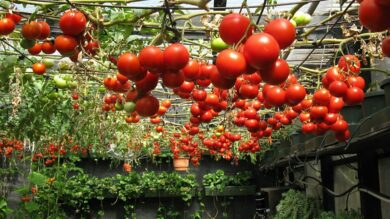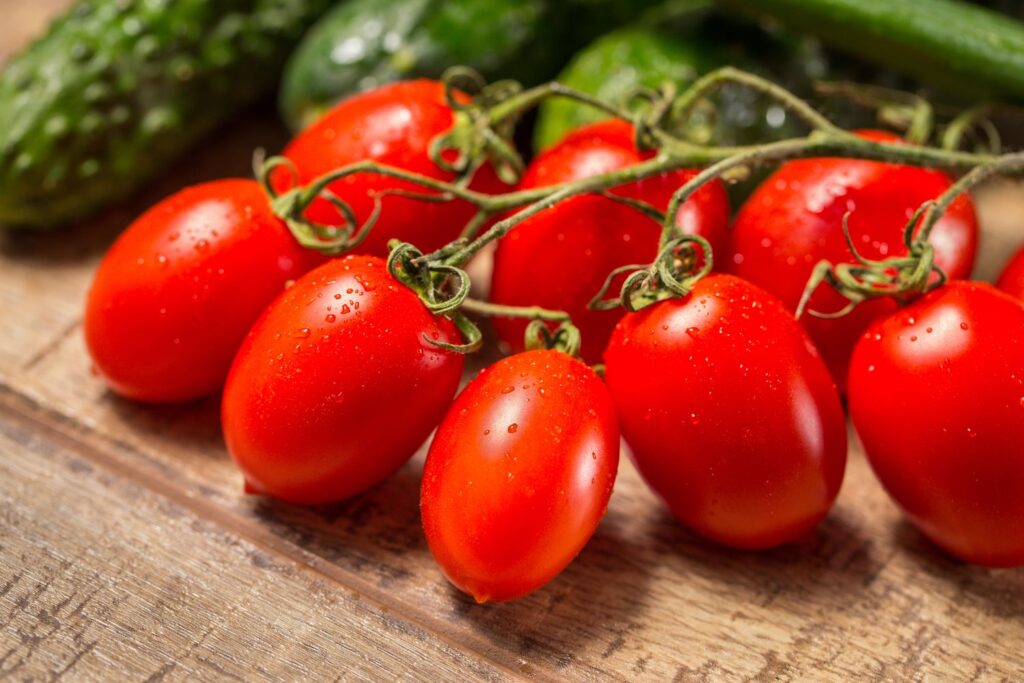Due to the high demand for tomatoes worldwide, tomato farming is a profitable venture that attracts both small-scale and large-scale farmers. Whether you plan to grow tomatoes for personal consumption or commercial purposes, understanding the best practices will significantly improve your yield and profit margin.
This guide will cover everything you need to know about successful tomato farming, from choosing the right variety to harvesting and marketing your produce. If you’re interested in how to start a profitable tomato farming, you can read our article on it, we will be focussing only on 11 tips on How to Become a Successful Tomato Farmer here.
1. Choosing the Right Tomato Variety
Tomatoes come in different varieties, each suited for specific climatic conditions and market demands. Some of the most common tomato varieties include:
- Cherry Tomatoes – Small, sweet, and ideal for salads.
- Beefsteak Tomatoes – Large, juicy, and perfect for slicing.
- Roma Tomatoes – Firm and fleshy, best for making sauces and pastes.
- Heirloom Tomatoes – Unique flavors and colors, popular in organic markets.
- Hybrid Tomatoes – Bred for disease resistance and higher yields.
When selecting a variety, consider factors such as climate suitability, resistance to diseases, market demand, and intended use.
2. Suitable Climate and Soil Requirements
Tomatoes thrive in warm climates with plenty of sunlight. They require:
- Temperature: 21°C to 27°C during the day and 15°C to 20°C at night.
- Sunlight: At least 6–8 hours of direct sunlight daily.
- Soil Type: Well-draining, loamy soil with high organic content.
- pH Level: 6.0–6.8 (slightly acidic to neutral).
- Soil Preparation: Ensure the soil is rich in nutrients by adding compost or well-rotted manure before planting.
3. Land Preparation and Planting
Preparing the land properly will create optimal growing conditions for tomatoes. Follow these steps:
- Clear the Land: Remove weeds, debris, and old plant material to prevent pest infestations.
- Plough and Harrow: This aerates the soil, improving drainage and root penetration.
- Apply Organic Matter: Compost and manure enhance soil fertility.
- Create Ridges or Raised Beds: Improves drainage and root development.
- Spacing: Plant tomatoes 45–60 cm apart in rows that are 90–120 cm apart.
Tomatoes can be planted from seeds or seedlings. For seeds, start them in nursery beds or seed trays, and transplant them when they reach 6–8 inches in height.
4. Watering and Irrigation
Tomatoes need consistent watering to grow properly. The best watering practices include:
- Drip Irrigation: Recommended for commercial farming as it conserves water and prevents fungal diseases.
- Watering Frequency: At least 2–3 times a week, depending on rainfall levels.
- Avoid Overwatering: Too much water can cause root rot and splitting of tomatoes.
- Mulching: Helps retain moisture and suppress weeds.
5. Fertilizer Application
Tomatoes require balanced nutrients to grow healthily. A proper fertilization schedule includes:
- At Planting: Apply organic compost and NPK 10-10-10 fertilizer.
- Vegetative Stage: Use nitrogen-rich fertilizer (NPK 20-10-10) to promote leaf and stem growth.
- Flowering & Fruiting Stage: Switch to potassium and phosphorus-rich fertilizers (NPK 10-20-20) to enhance fruit development.
Regular soil testing helps determine the exact fertilizer needs of your farm.
6. Pest and Disease Management
Tomato plants are susceptible to various pests and diseases. Common problems include:
Pests:
- Aphids: Tiny insects that suck sap from plants. Control using neem oil or insecticidal soap.
- Tomato Hornworms: Large green caterpillars that feed on leaves. Hand-picking and applying biological controls help manage them.
- Whiteflies: Cause leaf yellowing and spread diseases. Control with yellow sticky traps and neem oil.
Diseases:
- Early Blight: Fungal disease causing leaf spots and wilting. Prevent with proper spacing and fungicides.
- Late Blight: Rapidly spreads in humid conditions. Control by removing affected plants and applying copper-based fungicides.
- Tomato Mosaic Virus: Causes stunted growth and mottled leaves. Prevent by using disease-resistant varieties and disinfecting tools.
Regular crop monitoring, crop rotation, and proper sanitation help prevent pest and disease outbreaks.
7. Staking and Pruning
Supporting tomato plants enhances air circulation, prevents fruit rot, and increases yield.
- Staking: Use wooden stakes, cages, or trellises to support plants.
- Pruning: Remove lower leaves and suckers to improve airflow and direct energy to fruit production.
- Topping: Cut the growing tip once the plant reaches a desired height to focus energy on fruiting.
8. Weed Control
Weeds compete with tomato plants for nutrients, water, and sunlight. Effective weed management strategies include:
- Mulching: Helps suppress weeds while retaining soil moisture.
- Hand Weeding: Removing weeds manually prevents competition for nutrients.
- Herbicides: Selective herbicides can be used, but caution is needed to avoid harming tomato plants.
9. Harvesting and Post-Harvest Handling
Tomatoes are ready for harvest 70–90 days after planting. Harvesting tips include:
- Pick at the Right Maturity Stage:
- Green Stage: For long-distance transport.
- Breaker Stage: When slightly colored, ideal for commercial supply chains.
- Fully Ripe Stage: Best for local markets and immediate consumption.
- Use Clean Containers: Prevents contamination and bruising.
- Store in Cool Conditions: 12°C–15°C to extend shelf life.
- Sorting and Grading: Separate tomatoes based on size and quality for better market value.
10. Marketing and Selling Your Tomatoes
To maximize profits, consider the following marketing strategies:
- Sell to Local Markets: Direct sales to consumers, supermarkets, and restaurants.
- Wholesale Distribution: Supply large-scale buyers, including food processors.
- Export Opportunities: High-quality tomatoes can be sold internationally.
- Value Addition: Process tomatoes into pastes, sauces, or dried products to increase earnings.
- Online Sales: Use social media and e-commerce platforms to reach more customers.
11. Profitability and Business Considerations
Tomato farming can be highly profitable when done correctly. To maximize earnings:
- Keep Production Costs Low: Optimize irrigation, pest control, and fertilizer use.
- Diversify: Grow different tomato varieties to meet varying market demands.
- Plan for Seasonality: Prices fluctuate, so planting during off-seasons can yield higher profits.
- Financial Management: Keep records of expenses, sales, and profits for better decision-making.
Conclusion – How to Become a Successful Tomato Farmer
Successful tomato farming requires proper planning, good agricultural practices, and effective pest and disease management. By selecting the right variety, preparing the soil well, using the best irrigation methods, and employing smart marketing strategies, you can achieve high yields and profitability in tomato farming. Whether you’re a beginner or an experienced farmer, implementing these strategies will set you up for success.




